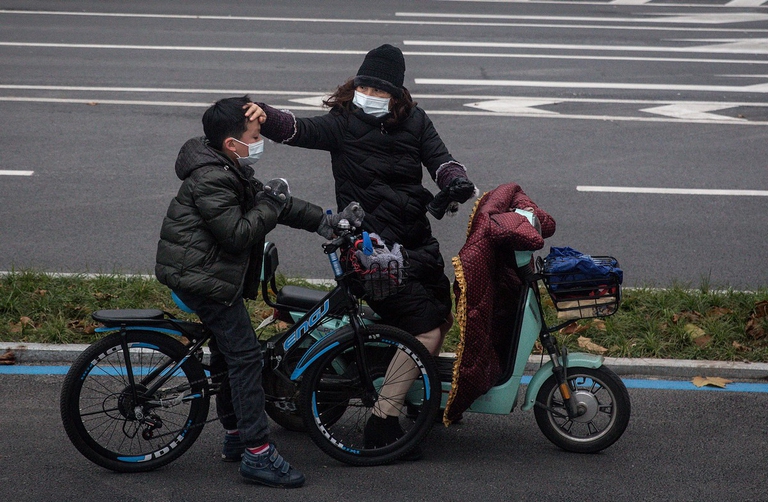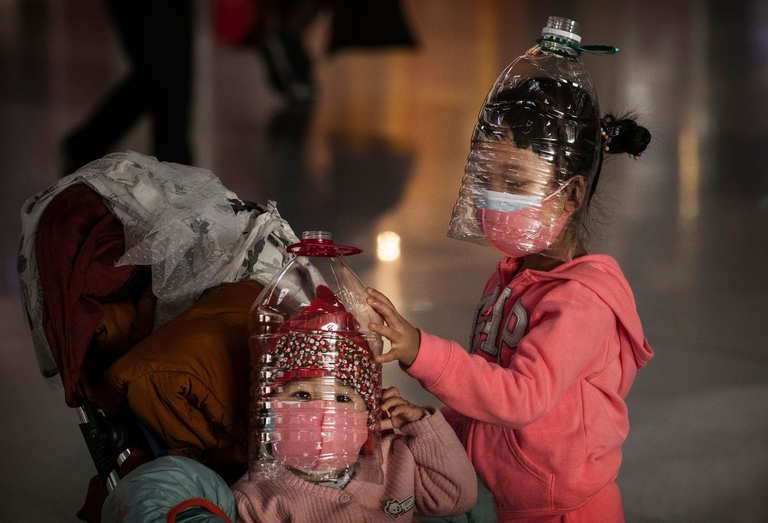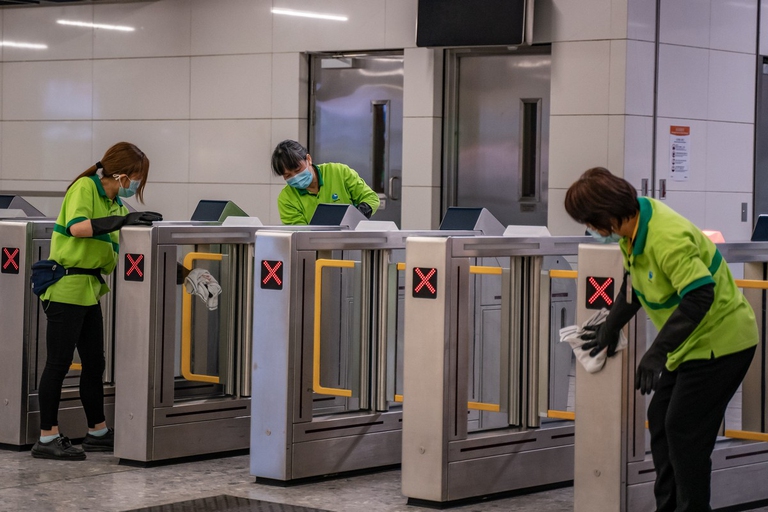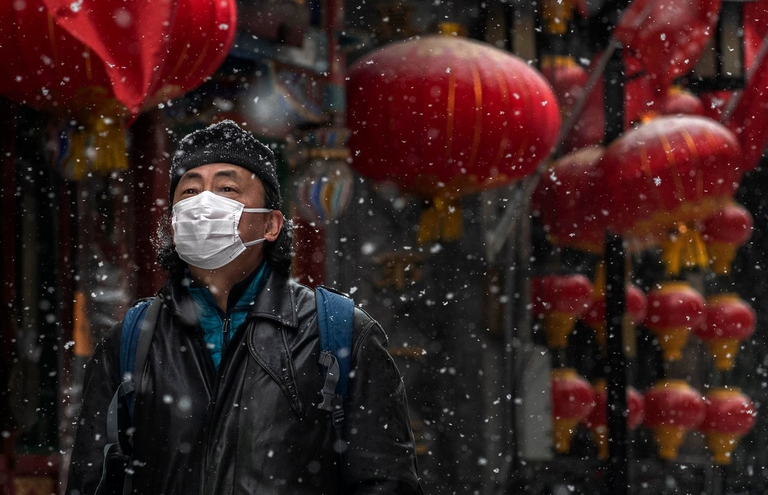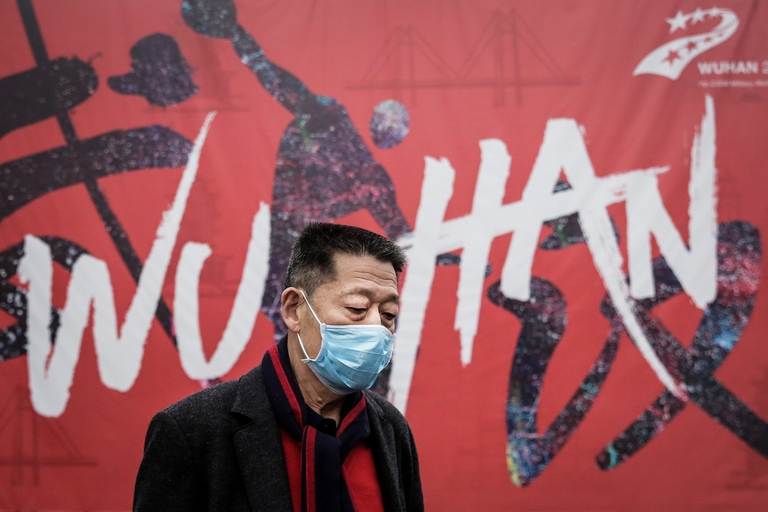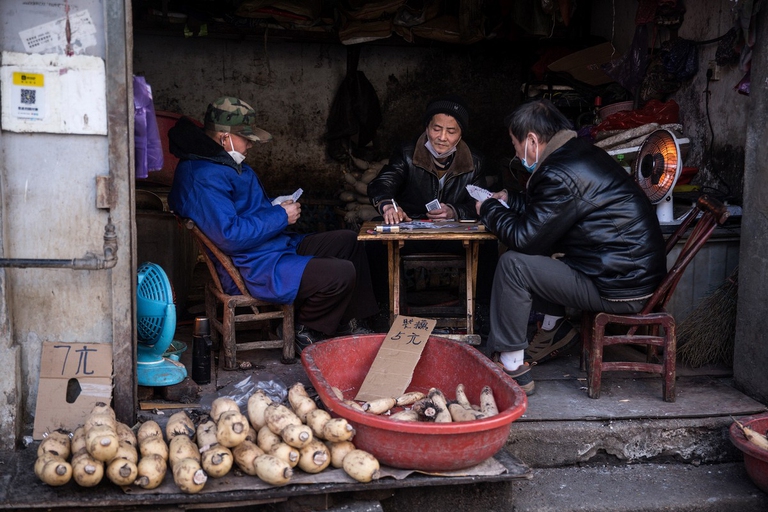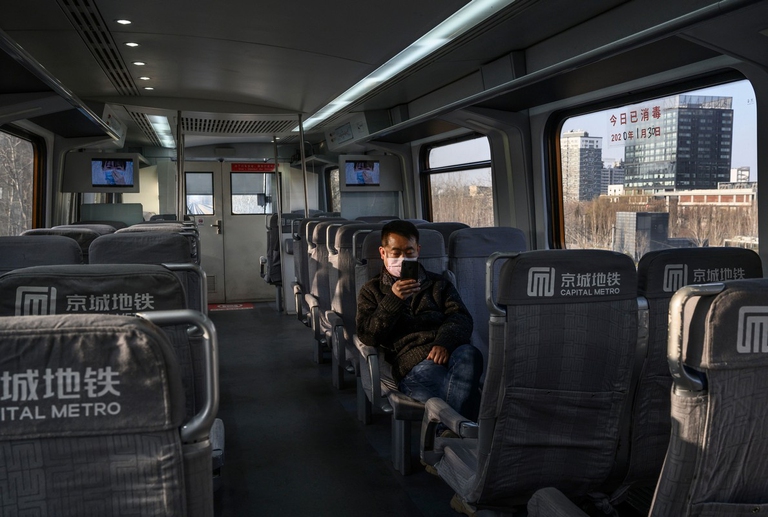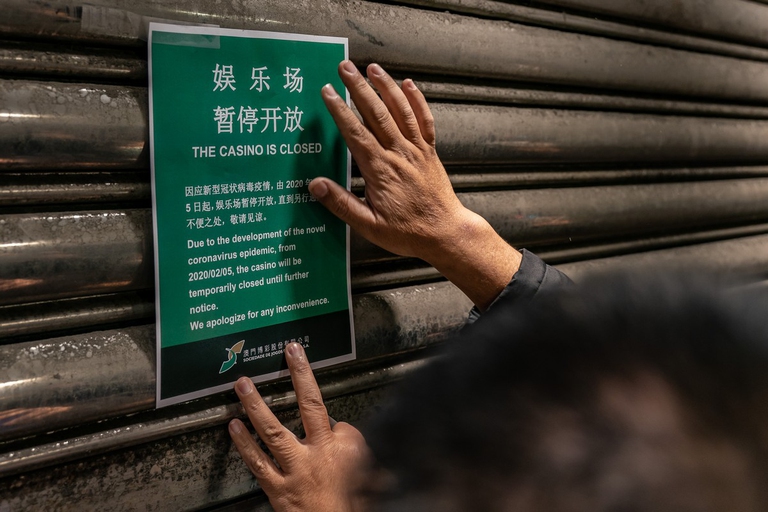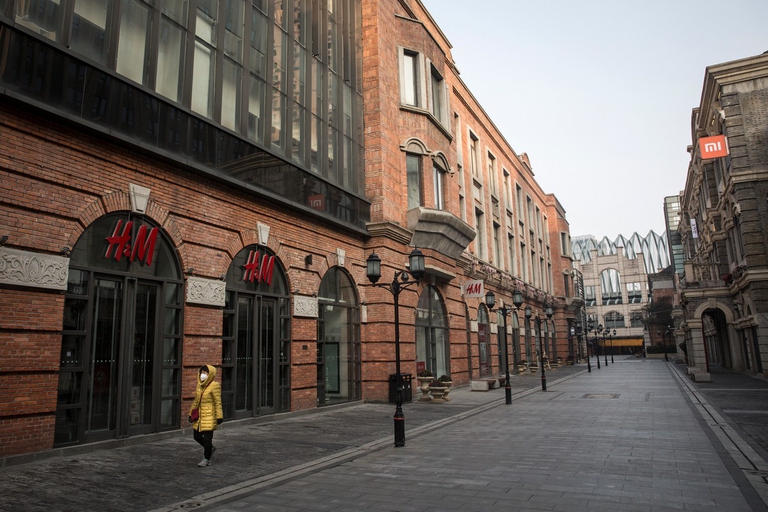
The second wave of the Covid-19 pandemic has shone a painful spotlight on the dire conditions of tea garden workers struggling against poverty in India.
The consequences of the novel coronavirus or Covid-19: what are the symptoms, what the death toll is, whether there’re a cure, how China has been affected. And why it’s been labelled an emergency also in economic terms.
It was meant to be a time of celebration for China. The arrival of the Chinese New Year usually sees people flooding the streets and squares of their cities. Music, singing and laughter echo through vibrantly decorated, colourful neighbourhoods. The smell of delicious food wafts through the air. But this year is different in Wuhan. The capital city of Hubei province looks like a ghost town. One of China’s most important urban centres has become unrecognisable since its residents were put under quarantine. Greyness, fear and silence reign supreme. It’s hard to imagine that its population reaches 11 million people.
The novel coronavirus epidemic that has caused panic across the world started here, in one of the city’s many markets. Around 40,000-60,000 people have been infected with the virus in China so far, and over 1,350 have died in the country where the epidemic originated. The worldwide threat level is extremely high, so much so that the World Health Organisation (WHO) has declared a state of emergency.
A vaccine to prevent the spread of this lethal virus hasn’t been discovered yet, but major progress has been made this month, hopefully contributing to its creation in the future. The Lazzaro Spallanzani National Institute for Infectious Diseases in Rome, Italy was one of the first centres in the world to isolate the virus, called Covid-19 (after initially being named 2019-nCov).
The institute’s team was able to extract and isolate it from a Chinese couple visiting Rome who were admitted to the centre on suspicion that they had contracted the disease. The discovery is key in finding a cure because scientists can now monitor the progression of the virus across time, understanding its origin and identifying the medication best suited to curing it. But it will take time. “In these cirucumstance it’s essential to have an effective diagnostic system, because when there are suspected cases the response has to be rapid,” explains Doctor Carlo Signorelli, professor of Hygiene at Milan’s Vita-Salute San Raffaele University in Italy.
Coronaviruses (CoV) are a family of seven respiratory viruses that can cause various diseases, from the common cold to more serious ones like SARS (severe acute respiratory syndrome) and MERS (Middle East respiratory syndrome). They can be found in animals other than humans, especially mammals and birds.
The better these viruses are monitored at pace with the advancement of medical knowledge, the higher the chances of isolating other strands. In fact, the novel coronavirus is part of a previously unknown strain that scientists initially named 2019-nCoV. “The sequencing of Covid-19 is a 76 per cent match with the SARS virus’s DNA,” explains Elisa Vicenzi, director of the viral pathogens and biosecurity lab at Milan’s San Raffaele hospital.
Symptoms are very similar to those associated with a common flu:
At the moment, the illness has an incubation period ranging from six to 14 days, during which the risk of contagion is very high.
Neither of these questions has a clear and certain answer yet. According to the WHO, it’s likely that the initial outbreak happened in the Huanan Seafood Wholesale Market in Wuhan, where live animals were sold. Hundreds were butchered each day in front of customers, in hygienic and sanitary conditions well below an acceptable threshold. Many of the first people to have contracted the virus worked in close contact with the animals sold at the market.
Dogs, cats, rabbits, chickens, bats, mice, ducks, snakes and many other animals were crammed into tiny cages, waiting to be butchered in front of paying customers. Some were even cooked on the spot right after being killed. In crowded conditions, furthermore, people likely come into direct contact with animal corpses, including bodily particles and fluids, increasing the risk of viral contagion.
Research by the US Centers for Disease Control and Prevention shows that 75 per cent of new pathologies originates from animals, in filthy factories, slaughterhouses and live animal markets. Unsurprisingly, as the WHO points out, the novel coronavirus, SARS and MERS were all transferred from animals to humans, such as had occurred in the past with swine flu, mad cow disease and and avian flu, which all caused hundreds of victims worldwide.
The mortality rate associated with the novel coronavirus is approximately 3 per cent. The WHO provides daily reports on the number of contagions and deaths, which can be accessed here. On the 13th of February 46,997 cases in 25 countries were reported – 46,550 of which in China – for a total of 1,368 deaths in the country most affected by the epidemic and a single one outside of it: however, 13,332 clinically-diagnosed cases (versus laboratory-confirmed ones) reported from Hubei were excluded from the WHO’s figures.
While these number may seem scary, it’s important to contextualise them in comparison to other illnesses. The common flu has a mortality rate of 1 per cent, however its yearly death toll exceeds 400,000 people. The SARS epidemic of 2002 had a 10 per cent mortality rate, with more than 8,000 cases leading to over 700 deaths. In 2012, the MERS epidemic led to 2,500 cases of infection, with a mortality rate of 35 per cent.
According to data published by John Hopkins University, 4,850 people worldwide have contracted and been cured from the virus, 2,639 of which in Hubei alone. The remaining 2,211 such cases occurred in other areas of China, one in Macau, one in Taiwan and 49 in other countries.
The percentage of patients cured from Covid-19 in China increased by 10.6 per cent, from the lowest rate of 1.3 per cent as of the 27the of January, as reported by Mi Feng of the Chinese National Health Commission. The number of cured patients has increased relatively rapidly, the functionary declared at a press conference in Beijing. Outside of Hubei province, the number of new confirmed cases of Covid-19 has decreased over the past days.
No, the coronavirus epidemic can’t be labelled a pandemic, which is defined by the WHO as “the worldwide spread of a new disease”.
“We’re at the phase where it’s an epidemic with multiple foci,” Sylvie Briand, director of the WHO’s Infectious Hazards Management Department, told reporters. Furthermore, Covid-19 isn’t spreading within the countries outside of China where it has been detected, and the cases recorded so far affect only people who have had direct contact with the virus or someone infected in Wuhan. It must also be considered that most of the people who have lost their lives due to the disease are aged between 48 and 89 years and already suffered from ill health.
The WHO declared a high state of alert “because, effectively, it is an emergency. We’re talking about a new illness that has never been seen before, so there are no medicines to fight it,” says Doctor Signorelli of Vita-Salute San Raffaele. The number of cases is growing exponentially, even though most are within China. Signorelli points out how, “according to a report by the European Centre for Disease Prevention and Control (ECDC), the epidemic’s peak hasn’t been reached yet. The virus is still mutating and if it started spreading in other countries at the same rate it is in China, the number of cases would skyrocket”.
Given the high number of cases, thirteen cities in Hubei province, inhabited by a total of 56 million people, have been quarantined and are isolated from the rest of the world. The Chinese government has adopted unprecedented safety measures: within the cities, people have been asked to remain indoors, there’s no public transport available and even the circulation of private vehicles has been prohibited. Outside of this region, many local authorities opted to extend Chinese New Year holidays until 17 February. Some countries, including France, Italy and the US, have repatriated all their citizens living in affected areas.
The decision to impose quarantine measures was dictated by the urgent need to minimise contact among people, given fears of airborne transmission of the novel coronavirus. This forced isolation, however, coincided with one of the most important Chinese cultural events: the whole country had been celebrating the New Year, a time in which people normally travel, exchange gifts and gather to celebrate. The epidemic and consequent state of quarantine imposed in some cities have hit certain local businesses hard, causing them to remain closed during one of the year’s most profitable periods. The city of Wuhan has over 11 million inhabitants: it’s China’s sixth largest city, one of its main industrial centres. But now it’s “closed“.
The novel coronavirus epidemic has had serious consequences for China as a whole. The fear of contagion has led many multinational companies to suspend their commercial relationships with the Asian country, even with cities that haven’t been directly affected by the illness and have no recorded cases of coronavirus. This will have consequences for all national and international trade sectors.
According to data collected by financial agency Learn Bonds, the Covid-2019 epidemic has become the most costly of the past twenty years in economic terms, even though ebola, swine fever and SARS all had much higher mortality rates. It’s estimated that the coronavirus will cost China 453 billion yuan (equivalent to 65 billion US dollars), equal to 2 percent of the country’s GDP, in the first four months of 2020 alone. According to Learn Bonds’ calculations, the impact of this epidemic on global GDP could be even more significant and may end up hindering China’s economic growth as an increasing number of countries block trade with it. If the virus isn’t contained soon, a similar situation might develop in other parts of the world too.
Read more: Ebola exists. A day at the heart of the epidemic in the Democratic Republic of Congo
The security measures enacted by the Chinese government are unprecedented. Huoshenshan hospital, whose name means “Fire God Mountain” in Mandarin, was built in under ten days between the 23rd of January and 2nd of February. It can now hold a thousand patients.
The Higher People’s Court in the northeastern Chinese province of Heilongjiang is the highest tribunal in the People’s Republic of China. It ruled that the punishment for spreading false news about the novel coronavirus amounts to 15 years in prison, and those who refuse to respect conditions of quarantine risk seven years behind bars. Those caught intentionally spreading the virus are at risk of capital punishment, although it’s not clear how the crime would be detected and enforced.
After all, Chinese president Xi Jinping has said that there’s no room for mistakes. Local authorities have already been accused of having taken too long to identify the virus, dangerously increasing the risk of contagion. The proximity to Chinese New Year, the terror of such a discovery and generale state of fear instilled by the central regime led local authorities to censor the doctors who first noticed the new virus spreading, long before contagion reached current levels. Five million people were thus able to leave Hubei province before the quarantine was imposed. Attempts to track them down are ongoing.
Chinese authorities have nonetheless made significant progress in managing the epidemic. “Compared to SARS twenty years ago, the authorities responded more quickly and effectively,” Signorelli explains. “There had been delays in information around the earlier epidemic and this didn’t allow for the implementation of quarantine practices, which this time around have avoided the epidemic significantly spreading to other regions outside of China. Suspending flights and checking passengers are very effective measures. Economically there will be major consequences because restricting the circulation of people and goods always has financial repercussions, but it’s a price worth paying”.
Concurrently with the coronavirus, another epidemic has spread to the detriment of the Chinese community: bigotry and intolerance. It’s worth noting that any person, regardless of their nationality, has the same likelihood of contracting Covid-19. What determines contagion are the places one visits, not their country of origin.
Fear, however, hinders rationality and episodes of intolerance – even outright racism – have increased massively. In some countries such as Italy, it has been reported that people have been avoiding Chinese restaurants and shops, and gone as far as hurling insults towards Asian people in the street. It’s as if some believe every Chinese person to be responsible for spreading the coronavirus and as if contracting an illness is a crime.
The WHO has described it as a veritable “infodemic“, an epidemic of (mis)information that has reached people and sent them into a panic. As often happens in these situations, social media has fuelled the fire, contributing to spreading lies and hate: from false audio recordings underpinning conspiracy theories to absurd remedies supposed to protect people from the virus which, instead, put their health at risk.
The United Nations, of which the WHO is a specialised agency, is trying to fight the spread of fake news on social media, asking users to only refer to official sources for data, and disseminating infographics to educate people on good practices. Warnings have also been set up on the main social networks to try to advise users not to believe everything they read.
The novel coronavirus is less dangerous than global warming.”The fight against coronavirus has mobilised the whole world. The risk of a pandemic has made headlines globally and humanity is proving capable of facing the crisis, even accepting huge economic costs. Why doesn’t the same thing happen for the climate crisis? The answer is simple: the danger isn’t perceived with the same urgency,” writes journalist Donato Speroni.
But, contrary to these perceptions, climate change is responsible for many more deaths than Covid-19. In 2018 alone, it caused 9,000 victims and economic losses amounting to 238 million dollars. And there’s more. It has been proven that air travel pollutes more than entire nations, which has led to accusations that airlines aren’t doing enough to reduce emissions. Flying less, therefore, could be a valid solution that many see as unattainable, but which instead has proven effective in containing the novel coronavirus.
Siamo anche su WhatsApp. Segui il canale ufficiale LifeGate per restare aggiornata, aggiornato sulle ultime notizie e sulle nostre attività.
![]()
Quest'opera è distribuita con Licenza Creative Commons Attribuzione - Non commerciale - Non opere derivate 4.0 Internazionale.
The second wave of the Covid-19 pandemic has shone a painful spotlight on the dire conditions of tea garden workers struggling against poverty in India.
In response to a lack of public services, organisations and individuals are helping citizens weather the devastating Covid-19 crisis in India.
A study indicates that the zoonotic origins of coronavirus may have been favoured by global warming’s impact on the conditions for bat habitats.
While Africa’s Covid-19 response has been praised by some, the pandemic has triggered the continent’s first recession in 25 years.
In Coronation, a documentary filmed by the people of Wuhan, the dissident Chinese artist documents the government’s rigid control during lockdown.
David Nabarro of the WHO analyses worldwide actions against the pandemic. Lockdowns alone aren’t a sustainable response to stopping Covid-19.
Kenya may fail to meet its target of ending female genital mutilation by 2022 as Covid-19 school closures have seen more girls undergo the illegal practice.
Helsinki Airport has begun implementing a Covid-19 test which is both noninvasive and simple. The exceptional nurses involved are dogs.
The drop in air pollution during worldwide lockdowns helped prevent thousands of premature deaths. But the situation is returning to pre-crisis levels.
